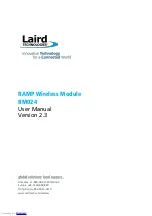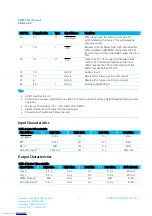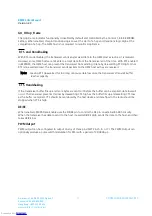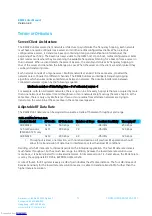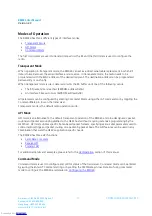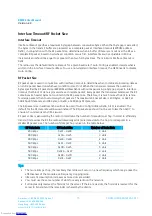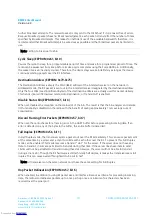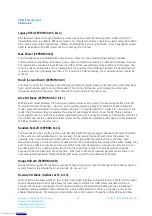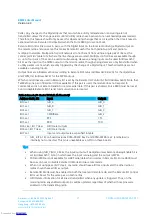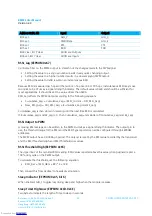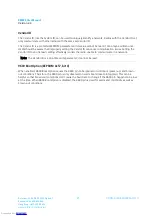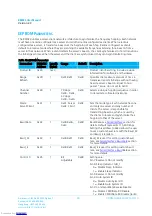
RM024 User Manual
Version 2.3
Americas: +1-800-492-2320 Option 2
Europe: +44-1628-858-940
Hong Kong: +852-2923-0610
www.lairdtech.com/wireless
11
CONN-GUIDE-RAMP24-0413
GO_0/Hop_Frame
The Hop Frame indicator functionality is disabled by default and controlled by the Control 1, Bit-6 EEPROM
Setting. When enabled, this pin transitions logic Low at the start of a hop and transitions logic High at the
completion of a hop. The OEM host is not required to monitor Hop Frame.
RTS and Handshaking
With RTS mode disabled, the transceiver sends any received data to the OEM Host as soon as it is received.
However, some OEM hosts are not able to accept data from the transceiver all of the time. With RTS enabled
in EEPROM, the OEM host can prevent the transceiver from sending it data by de-asserting RTS (High). Once
RTS is re-asserted (Low), the transceiver sends packets to the OEM host as they are received.
Note: Leaving RTS de-asserted for too long can cause data loss once the transceiver’s transmit buffer
reaches capacity.
CTS Handshaking
If the transceiver buffer fills up and more bytes are sent to it before the buffer can be emptied, data loss will
occur. The transceiver prevents this loss by deasserting CTS high as the buffer fills up and asserting CTS low
as the buffer is emptied. CTS should be monitored by the host device and data flow to the radio should be
stopped when CTS is high.
DE/RE
When enabled, RS485 Data Enable uses the DE/RE pin to control the DE pin on external RS-485 circuitry.
When the transceiver has data to send to the host, it asserts DE/RE High, sends the data to the host, and then
takes DE/RE low.
PWM Output
PWM output can be configured to output on any of three pins (SMT Pins 5, 6, or 7). The PWM Output can
optionally produce a pulse width modulation for RSSI with a period of 39.3846 µS.
Downloaded from
Downloaded from
Downloaded from
Downloaded from
Downloaded from
Downloaded from
Downloaded from
Downloaded from
Downloaded from
Downloaded from
Downloaded from

